<From Overseas Office> [ India ] Tried the food delivery app "ZOMATO"
- Release date: Nov 04, 2022
- 7810 Views
From the start of the Covid19 pandemic, the food delivery market such as UBER EATS and MENU has grown significantly in Japan and it starts being common in Indian daily life, also. In this issue, we would like to introduce aspects that are only found in India from the use of ZOMATO, a food delivery application born in India.
FYI, ZOMATO is a leader in the Indian delivery food market and is the company Uber sold its Indian food delivery business to. (Reference ①)
Reference①: BRIDGE "Uber sells Indian food delivery business to Zomato" https://thebridge.jp/2020/01/uber-offloads-indian-food-delivery-business-to-zomato-in-all-stock-deal
To use Zomato, first download the application and next, input your local cell phone number and credit card (*) to it. This is all you need to do, and you can start using it immediately.
Heard that it is not possible to use it with a Japanese credit card, but I was able to use it with my Rakuten card.
<Menu>
You can see many Indian food (Home style, Biryani, Thali, etc.), but you can also order salads, smoothies, Chinese soups, pizza, burgers, and such food familiar to Japanese people.
(Image 1)Menu
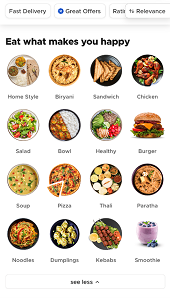
FYI, when you search by "Japanese," the image 2 appears, but when you actually look at the restaurant information, many of them are "Japanese food in restaurants combined with Asian cuisines” such as Korean and Thai. In India, Chinese and Thai food are more popular than Japanese food, so restaurants that serve only Japanese food seem to be rare.
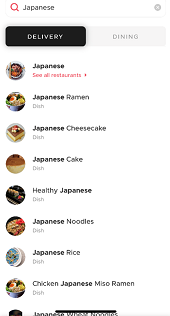
(Image 3) Japanese Restaurant Information
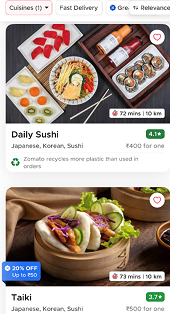
In terms of the experience of eating international cuisine in India (not limited to delivery), Chinese cuisine was the most popular, followed by Italian and Thai cuisine. Only 24% of the respondents had tasted Japanese food, or only one in four. Korean cuisine is also becoming popular among young women, helped by the popularity of K-POP and K-dramas. (Reference ②)
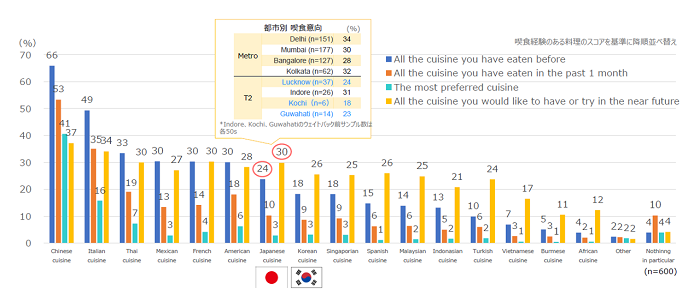
In Image 4, the green and red marks are attached to the upper left corner of the dish name. The green mark is a vegetarian mark, indicating that the dish does not use any animal-derived ingredients. On the other hand, the red mark is a non-vegetarian mark and indicates that the dish contains ingredients of animal origin (meat, fish, etc.). You might expect Indians to be vegetarian, but the actual percentage of pure vegetarians is about 30% (Reference 3), and many non-vegetarian dishes can be found on ZOMATO's menu.
(Image 4)An example of restaurant menu
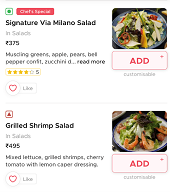
Reference③ 「union government’s sample registration system baseline survey year 2014」 TABLE 5.1 : PREVALENCE OF VEGETARIANISM AND NON-VEGETARIANISM AMONG THE POPULATION AGED 15 YEARS AND ABOVE, INDIA 2014 https://www.im4change.org/docs/242Sample-Registration-System-Baseline-Survey-2014.pdf
You might think Indian food is spicy as curry but some restaurants offer customization, and that allows you to choose between spicy and non-spicy, which Japanese people appreciate. Indian food is basically spicy, so it is better to order "non-spicy or mildly spicy" unless you are really good at spicy food (or love to challenge yourself with extreme).
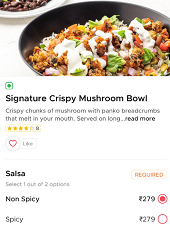
<To Order>
Before you make an order, check for coupons that can be used. If it is the first time to order at the restaurant, there is a coupon "TRYNEW" to have a discount. There are other coupons available depending on the payment method.
(Image 6) Types of Coupons

Confirm the total price at the end (Image 7)
(Image 7) Total Price
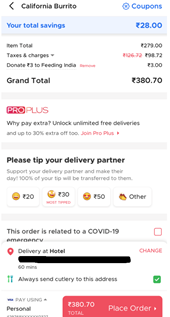
Above Grand Total, it says "Donate ₹3 to feeding India," which is a so-called fund-raising system that allows people to contribute to Indian society through delivery orders. In India, companies that meet certain requirements (e.g., large corporations) are obliged to contribute a certain amount of money to fulfill their corporate social responsibility (CSR), and I feel that awareness of social contribution is relatively high, especially among wealthy people. (Reference 4)
Finally at the bottom, there is a check box for serving utensils (forks, etc.), but even the check box is ticked, utensils are often forgotten. FYI, the utensils used are made of wood and the bag used for delivery is made of paper. Use of plastic for those items are prohibited in India. (Reference 5)
Reference④:TMI Associates, "India's Latest Legal Information - (March 2021, No. 2) Further Tightening of Regulations on Corporate Social Responsibility (CSR)" (https://www.tmi.gr.jp/service/global/asia-pacific/2021/12427.html)[https://www.tmi.gr.jp/service/global/asia-pacific/2021/12427.html]
Reference⑤:IDEAS FOR GOOD "India prohibits six types of disposable plastic products; total ban by 2022." https://ideasforgood.jp/2019/09/18/india-to-ban-plastics/
After ordering, all you have to do is wait as stated, "XX minutes to delivery". The app also shows the current location of the delivery person.
The delivery method can be selected at the time of order, and the user can choose to be "left at the door," "hand-delivered," or "handed to a guard/receptionist. I actually chose mine to "have it handed to a guard," but I suspect this choice does not work very well, as one out of two times I was called by the delivery person and then handed directly to me. Also, some of the delivery people do not speak English, and when they called me, I often had to go to the front door to pick it up in the end because I could not have a conversation with them.
(Image 8) Receiving Method

In my case, I was lucky, and the food was not spilled during the delivery, and even when I ordered soup, it was delivered safely because it was completely sealed with tape. (I asked other expats and they told me that there are many spills and messes)
(Image 9) Safely delivered food (Left: Shrimp dim sum, Right: Chicken Soup)
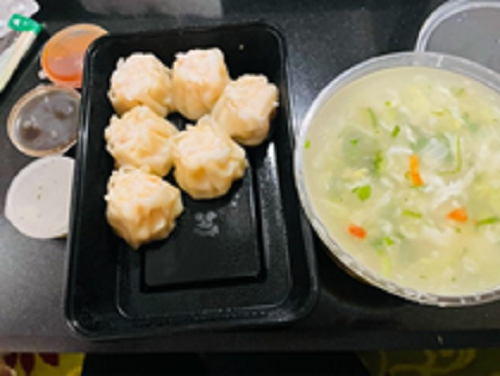
In India, there aren’t many stores like the Japanese convenience stores and the food delivery services are very convenient, cheap, and easy to use. In addition, using a food delivery service outside of your country will help you learn about the local food environment and culture, so we encourage you to try it when you travel to India.
"Indian Eating Habits" survey results can be found in our company’s voluntary survey.
The survey covers such topics as eating out, food depletion, eating RTE foods*, eating multinational cuisine, and frequency of alcohol consumption.
*RTE Foods (Ready to Eat Foods): pre-packaged meal, cup noodles and etc. which can be eaten simply by pouring hot water or heating them up.“What meal represents Indian mothers’ homemade recipe?”“What do Indians eat when they are sick?”
These two questions are also introduced in this report, so if you are interested, please refer to the following URL.
https://www.global-market-surfer.com/report/detail/157/
-

Author profile
Intage India Misaki Tanaka
Currently on assignment in India living in Japan.Stayed in India for 40 days from March to April 2022. Currently, although remotely, she is communicating with local members and experiencing Indian culture and tastes.
 Global Market Surfer
Global Market Surfer CLP
CLP